The “youngest” federal state of Burgenland is located southeast of Lower Austria , down from Lake Neusiedler .
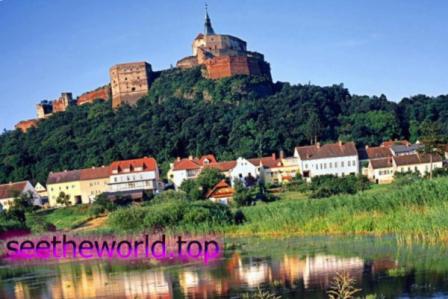
The area is almost 4 thousand square kilometers, and the population does not exceed 300,000 people. At the beginning of the 20th century, this territory belonged to Hungary. After World War I, Burgenland was ceded to Austria . That is why in the modern history of Austria this territory is called the youngest federal land.
The capital of Burgenland is the town of Eisenstadt , the ancestral home of the aristocratic Esterhazi family . Until now, this genus plays the most important role in the development of the region. Most of the palaces and fortresses on the territory of Burgenland are in the private possessions of this dynasty.
The small, cozy capital of Burgenland is located on the southern slopes of the Laita hills , 50 km south of Vienna . Eisenstadt became the main city of Burgenland relatively recently in 1986, when the larger and more visible city of Edinburgh appeared on the other side of the border and was named Sopron .
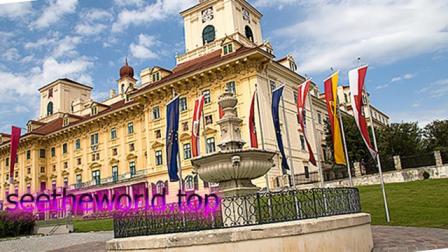
Today , Eisenstadt is a large wine-making center. However, Eisenstadt is more commonly associated with the name of the famous Austrian composer – the classic Joseph Haydn , who for many years served as Kapellmeister to the Hungarian princes of Esterházy . Nearby, in the village of Ryding , another famous composer, Ferenc Liszt, was born .
This region is bilingual (about 15% of the population are Hungarians and Croats), but the culture of these lands differs little from the culture of the rest of Austria , which cannot be said about the nature of the region. Burgenland is a flat area, which contrasts with the hilliness of the rest of the country.
The beauty of the local nature is primarily represented by the more picturesque Lake Neusiedler . This is the only steppe lake on the territory of Western Europe . It is surrounded by thickets of reeds, swamps and ponds. This reservoir is an ecological phenomenon – the water level in it remains constant, but the lake has no inflows and outflows of natural origin.
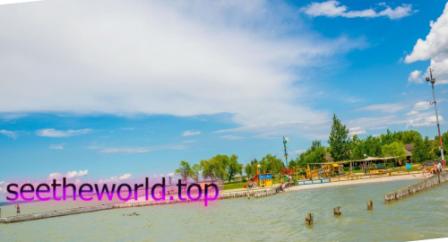
Salty water in the lake does not become an obstacle for numerous species of freshwater fish that have chosen the reservoir as their home. About 300 species of birds and many animals live here. This is a favorite vacation spot for Austrians.
The old town of Neusiedl am See , the baroque palace in Halbthurn , the Freichenkirchen basilica , the famous wine-growing village of Merbisch am See , the old trading center of Rust , the village of St. Margareten im Burgenland with its eco-park are also attractive sights for tourists . “Fairytale forest” in the west and other places that please the eye. Lovers of medieval architecture will also be satisfied, you just need to find yourself in the town of Güssing , located around the picturesque castle.

Among foreign guests , Burgenland is not very popular, which is not entirely deserved, because there are many places worthy of attention.
The central city of these lands is Eisenstadt , the ancestral home of the Esterhazi princes . This family still plays not the last role in the life of the region.
The field of health tourism is well developed in Burgenland . Several resorts with mineral springs are located in the vicinity of Lake Neusiedler : Lutzmannsburg – Frankenau and Bad Tatzmannsdorf.
Burgenland: Rust is a town of storks and fine wine
Beautiful summer days seem to be made for visiting the picturesque town of Rust, located on the shores of the steppe Lake Neusiedler (German: Neusiedler See, Hungarian: Fert).
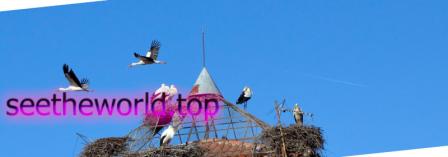
The town of Rust, which has only about 1,700 permanent residents, is widely known as the city of storks and good fine wine. It is charming at any time of the year, but in the summer, thanks to the storks and their chicks, it is definitely the most beautiful. Nests of storks can be seen here on almost every second chimney. An interesting fact is that Rust has been chosen as the most beautiful city in Burgenland several times and since 2001 has even been included in the UNESCO World Heritage List.
Despite the fact that Rust is one of the smallest towns in Austria, many visitors visit it every year. Because Rust is really worth seeing!
Rust has something to offer
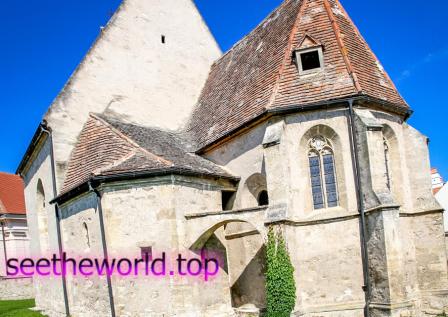
Some come here to take a break from everyday life, others in search of beautiful architecture, which in Rust is primarily represented by beautiful bourgeois houses of the 16th-19th centuries. Probably the most famous building in the town is the Fish Church (Fischerkirche) . We, like many others, were drawn here by everything together. Beautiful nature in the form of a unique steppe lake and incredibly rich flora and fauna is combined here with beautiful architecture and excellent cuisine. Many cafes, taverns or restaurants offer really excellent home cooking, and the local wine, thanks to the rare geographical location, is exceptionally delicate.
A town full of impressions
If you want to spend your vacation actively, then Rust is the right place for you. All lovers of active recreation will like it here. The huge Steppe Lake Neusiedler offers ideal conditions for water sports, and we don’t mean just any kind of swimming or water fun. Thanks to the sufficient force of the wind, fans of yachting, surfing or the increasingly popular kitesurfing will enjoy here.
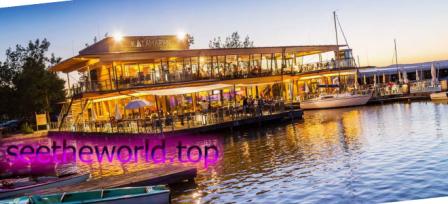
If you don’t want to get wet and you don’t have enough courage to sail on your own in a rented boat (the lake is really huge, so you can easily get lost or mistakenly return to another port), we recommend a boat cruise that leaves from the harbor in Rust. The outskirts of the city are criss-crossed with bike paths that will safely lead you through this beautiful region. Those who like romantic walks on small hills or evening gatherings in cellars near the vineyards will also be enchanted by Rust. Just one day was enough for us to make Rust give us a pleasant feeling of vacation and recharge us with new energy for the following working days.
Burgenland: Eisenstadt
Eisenstadt – the city of Haydna and Esterhazy, the capital of the federal state of Burgenland – is spread out in the Leith mountain range, in a green picturesque valley . It is a very small but beautiful capital and many tourists come to see its architecture and sights.
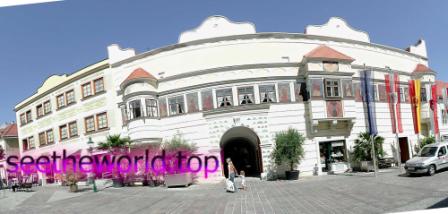
Archaeologists found out that this place was inhabited even before the arrival of the Celts. And in 800 AD, Emperor Charlemagne started the Bavarian settlement in these regions. The first mention of the city dates back to 1118, when the city was called ” Castrum ferreum ” – the city of iron, later it was called Kishmarton, and the city was known under the name Eisenstadt since 1373, when the power over the city passed into the hands of the Hungarian magnates Kanizhai .
Since the 15th century, Eisenstadt has been part of the Habsburg Empire , but it was considered to belong to Hungary and was part of the “Land of Four Castles” – Vierburgenland . Since 1647, Eisenstadt became the stronghold of another Hungarian family – the family of the Esterhazi princes , close to the Habsburgs. For many centuries, the Esterhazy family invested a lot of effort and money in the development and decoration of the city.
After the First World War, according to the Saint-Germain Peace Treaty, Eisenstadt passed to the Republic of Austria , and at the same time became the capital of the new Austrian region of Burgenland . During the Second World War, the city was bombed only once, and it was almost not destroyed.
Event tourism: Eisenstadt
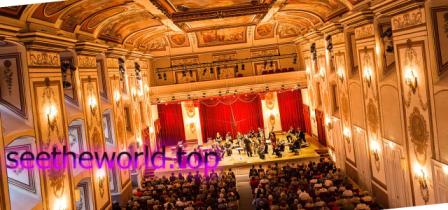
Nowadays, Eisenstadt is recognized as a national treasure of Austria, guests from all over the world come here to admire the unique architectural ensembles, to remember great composers – because Joseph Haydn and Ferenc Liszt were the favorite composers of the Esterhazy family , and they lived and worked here. Eisenstadt annually hosts the ” International Haydn Days ” and the famous ” Festival of 1000 Wines “, and before Christmas, Eisenstadt turns into a fairy-tale city with wonderful Christmas markets.
Art tourism: Eisenstadt
The main attraction of Eisenstadt and its symbol is the Esterházy Castle , built in the 13th century and which came into the possession of the Esterházy family in the 17th century. At the same time, the castle was rebuilt in the Baroque style.
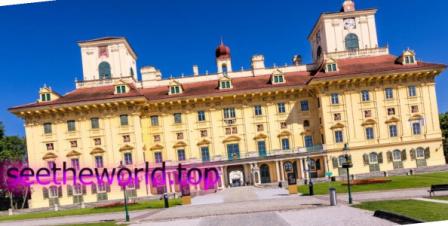
The princely family of Esterhazy belongs to the most historically important dynasties of Europe . Representatives of the Esterhazy family continue the work of their ancestors, both in the preservation and popularization of cultural heritage, and in the creation of new cultural meanings. The Esterhazys have always been generous patrons, passionate collectors and patrons of fine arts, which included the art of winemaking.
Esterhazy loved life, art, beautiful women, wine and music. In Eisenstadt there is a museum of Franz Liszt , who often visited here, and Joseph Haydn served as the court Kapellmeister to Esterházy. He wrote and performed his works for the princely family in a hall specially equipped for him, which now bears his name – the Haydnsaal . Haydn Hall is still considered one of the best venues for performing classical music with excellent modern acoustics and rich interior decoration. Many historical monuments of Eisenstadt are associated with the name of Joseph Haydn – a rich exhibition in the Esterhazy Palace is dedicated to him , the city also has the Haydn Museum , which is located on the street of the same name, and not far fromThe Bergkirche is open for viewing the Mausoleum of Joseph Haydn .

Architecture lovers and art travelers will appreciate many unique objects. So, within walking distance from the center of Eisenstadt, there is the Mountain Church – Bergkirche , built in the late Gothic style on the mountain of the same name. The Bergkirche mountain was rebuilt in honor of the Passion of Christ, to which more than 100 wooden statues correspond. In the Christian world, the Bergkirche was considered the eighth wonder of the world, and is still a popular pilgrimage site. It is also worth visiting the cathedral church of St. Martin , the patron saint of winegrowers, the surprisingly balanced ensemble of the Franciscan church Franciscanerkirche , and, of course, the most famous landmark of Eisenstadt, and probably of Burgenland – the Esterhazy Palace .
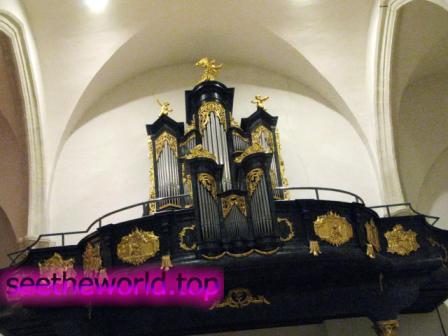
Chariot of Bacchus: Eisenstadt
A worthy place among this magnificence is occupied by the Esterhazy winery – one of the most modern factories in the world, equipped with excellent tasting and presentation halls. Wine tourists will be interested in getting to know the famous vineyards of the Esterházy winery. They are located in the best places, in the heart of the Neusiedler-Hügelland wine region : on the southern slopes of the Laitagebirge and Rüster Hügelland mountains . The unique combination of calcareous soils and the unusual microclimate of Lake Neusiedler allows you to create wine with a unique local flavor, and of course, it is here that one of the most famous “wine roads” of Austria passes.
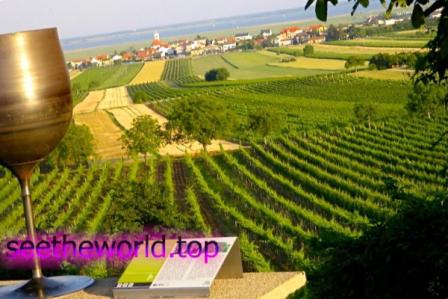
The rich history and unique collections, combined with the hedonism that has long been characteristic of the Esterházy family, turn Eisenstadt into a cult destination for lovers of wine and gastronomic tourism and art travel.
Burgenland: Neusiedler is a unique steppe lake in Europe
Not far from Bratislava, in the neighborhood of the border of Austria and Hungary, there is a drainless, moderately salty Lake Neusiedler. Along with Balaton, it is the only steppe lake in Europe. Its depth reaches no more than 2 meters, and thanks to this, it has become a paradise for unique fauna and flora, and to a greater extent for domestic and foreign tourists, sports or nature lovers.
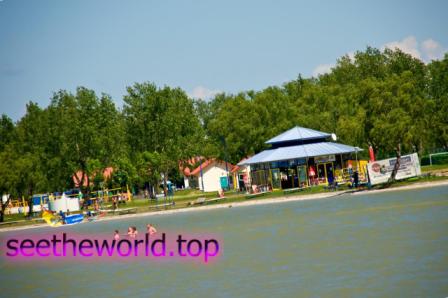
Lake Neusiedler (German: Neusiedler See, Hungarian: Fertő) occupies an area of 320 km² and is located at an altitude of 115 meters above sea level. It is interesting that due to the height of the earth’s curvature between Lake Neusiedler and the bordering Austrian town of Merbisch am See, which reaches 9 ,6 meters, from one end of the lake its other end is invisible. The area of the lake affects two states. A large part lies in Austria, which is at the same time the largest water area in the country, and a smaller part is in Hungary. The inflow of water into the lake is mainly provided by groundwater, but the small river Volka also has its share . The lake does not have a natural drain, but in 1895-1909, an artificial sewage canal, the Eisnerkanal, was built . On the Hungarian side of the lake, the water area connects withthe Danube basin . Large belts of reeds, which cover it in most places, are typical for this lake. In some parts, the belt reaches a width of 8 km. Near the village of Podersdorf am See there is the only place on the lake, about 2 km long, that is not covered with reeds.
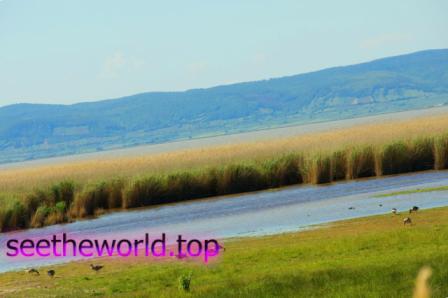
Reeds literally give this unique place life. Thousands of water birds and other rare animals nest in its bowels. Thanks to this phenomenon, the lake and its surroundings were included in two national parks ( Neusiedler-Seewinkel and Ferte-Hanschag), and in 2001 it was included in the UNESCO World Heritage List. It is also interesting to observe the seasons, which manifest themselves very interestingly on the lake. While the size of the lake increases in summer, it freezes to the very bottom during severe frosts in winter, thus creating what is probably the largest natural ice rink in Europe. But let’s go back to the summer. Swimming and water sports on the lake are very popular, as evidenced by several places for swimming and many moorings. Before we talk about its use for recreation and sports, we must mention a few interesting facts about its history.
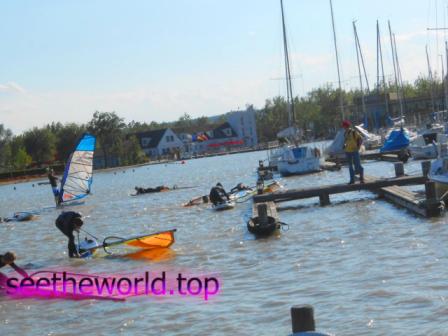
The lake “emerged” already about 20 million years ago. Then, more precisely, the geological process began, as a result of which this magical place appeared. It all started with the lowering of the area, later filled with salty sea water of the Tethys Sea , before the release of the so-called Danube glacier , from which modern sediments of the lake originate. However, it is interesting that in the 19th century Lake Neusiedler completely dried up. Fortunately, his era did not completely end there, and thus we still today have a rare opportunity to admire the beauty of an unusual creation of nature.
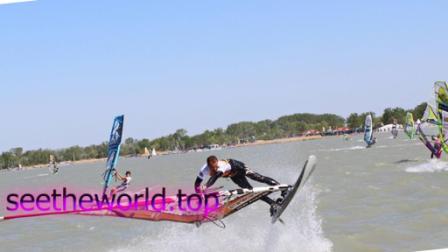
Up to 2,000 hours of sunshine per year makes the lake popular among tourists. They can enjoy sports here. Yachting, surfing, kitesurfing, tourism, golf or cycling are among the most popular. Services such as bicycle rental and other sports equipment are self-explanatory. After sports, you need to eat well and refresh yourself. The Burgenland region offers excellent gastronomy with delicacies and excellent wine from the wine regions of Lake Neusiedler. Culture lovers will enjoy especially in the summer, when operettas, classical music concerts and other musical events take place near the lake. Here you can also visit galleries, museums and exhibitions of many masters, which accompany the cultural program in the vicinity of the lake.
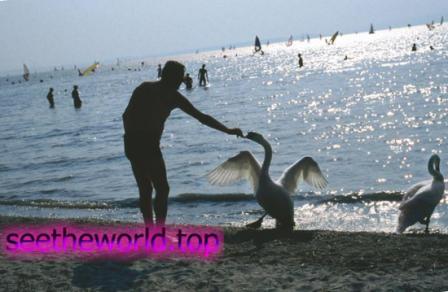
Nature is probably the greatest value of this place. International national parks offer a view of the unique flora and fauna, represented, for example, by rare species of plants, birds, steppe cattle or piglets of the Mangalitsa breed.
If you haven’t visited this place yet, we sincerely recommend that you visit it, because Lake Neusiedler combines magical nature, sports opportunities and excellent gastronomy. You can probably feel the best atmosphere of the lake on the bicycle route that leads from Bratislava to the Hungarian town of Sopron.
Burgenland: Parndorf is a shopping town
We have good news for all you shopping and fashion lovers out there. Today we will probably go to the most popular outlet center not only in Austria.
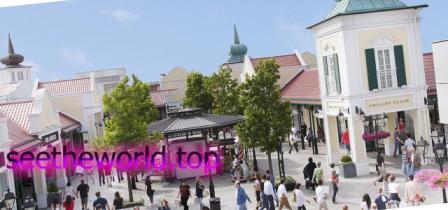
First, it is necessary to say what is hidden under the name Parndorf. In most cases, we call the well-known shopping center by this name, but only a few know that in its immediate vicinity there is also a village of the same name (about 4.5 thousand inhabitants), which until 1920 was part of the Moshon district.
If you go here by train, for example, from Bratislava or Vienna , then you need to get off at the ” Parndorf Ort ” stop. The train goes here every half hour, and the journey from Bratislava takes about 25 minutes. Then you have two options. Or you can take the relatively inexpensive Abraham Parndorf taxi or rent a bike at the Next Bike station (registration required). Of course, you can also go on foot, but we do not recommend it.
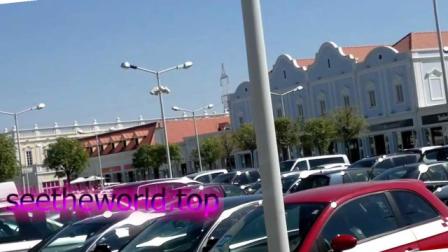
It is most convenient to go to Parndorf by car. From Slovakia on the highway A6, exit on the road B50 ( Gattendorf ), then turn right on the road 10 in the direction of Lake Neusiedler . From Vienna, you need to take the A4 highway to the Neusiedl – Geverbepark exit . The journey will take about 30 minutes.
Before going to the shopping center itself, we will tell you about several features. The shopping center offers so-called group bookings of 20 people or more. If you use it, you will receive a special card with a 10% discount in most stores. Once a year, a traditional huge sale takes place here, which literally causes mass hysteria, but the exact date is known immediately before it is held.
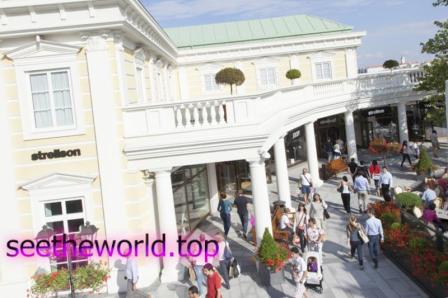
In the new McArthurGlen Outlet information center you will learn about the possibilities of combining shopping with tourism. The friendly staff at the information desk will offer you advice on excursions in the surrounding area and with brochures. Here you can buy tickets for various events, regional discount cards and even accommodation and gastronomy packages. We recommend you to visit this information center because the land of Burgenland is known for its exceptional nature, Pannonian atmosphere and 300 sunny days a year.

After an easy journey to the shopping town, one of the most difficult, or rather the most taxing walks in general awaits you. We don’t mean just for your feet, but also for your wallet. Since the Parndorf shopping center (official name Designer Outlet Parndorf ) is located on an area of 37,000 m 2and constantly increasing, visiting more than 170 stores with 600 global brands will surely tire you out. There are shops for clothes, shoes, porcelain, electronics, accessories, toys, jewelry – just about anything you want. All the goods are sold, of course, with a discount of at least 30%, but if you are lucky, you can find discounts much more. But we emphasize that most of the products were produced last season. The offer of clothes is limited by the choice of sizes, colors, models, etc. Also, the number of free parking spaces is huge, more than 3,000. You can pay by card here, but there are also ATMs. There is a playground and other attractions for children. There is a supermarket nearby. The center is open from Monday to Saturday, closed on Sundays and holidays.
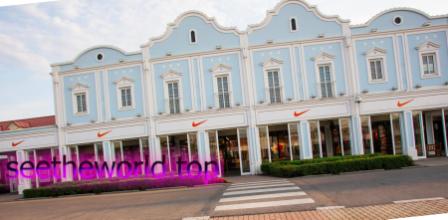
In addition to shopping, this town will also surprise you with its unique architecture in different styles with colorful facades or seasonal decorations, for example, with flowers. These interesting architectural solutions enhance the pleasant shopping experience. Our impressions of this non-traditional shopping center, which from a certain point of view has also become a tourist attraction of Burgenland , were more than positive. We made profitable purchases, admired the beauty of architecture and got new impressions.
Burgenland. Attractions
Stegersbach. Tabor Castle
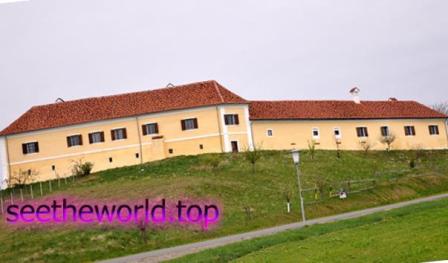
Tabor Castle is one of Austria’s oldest castles, located in a picturesque natural park. According to some sources, it was built in 1469, and already in 1607 it came into the possession of a rich count. Today, it is one of the oldest buildings in the city, owned by a rich and famous family. In 2002-2003, the castle was significantly rebuilt and restored.
The exterior facade of the building is painted in sand colors and is complemented by small classic windows, which in combination with the single-sloped brown tent roof looks truly impressive. There is also a round tower near the castle, in which there is a bar-restaurant.
After the renovation in 2002-2003, the interior decoration of the castle changed significantly. The walls and ceiling are painted in radiant light colors, which gives it a special shine. Also, opera performances are regularly held here, which gather a large number of people.
Eisenstadt. Mount Burns Bolt
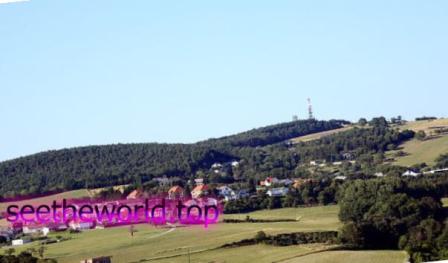 Burns Bolt is a mountain in Austria, on the territory of the federal state of Burgenland. Its peak rises 606 meters above sea level, offering wonderful, breathtaking views. On Burns Bolt, there are several observation decks at different heights, equipped with everything necessary for tourists to have a pleasant time.
Burns Bolt is a mountain in Austria, on the territory of the federal state of Burgenland. Its peak rises 606 meters above sea level, offering wonderful, breathtaking views. On Burns Bolt, there are several observation decks at different heights, equipped with everything necessary for tourists to have a pleasant time.
From the north and west, the mountain is covered with dense forests, while the east of Burns Bolt is covered with endless gentle meadows. Several forest roads equipped with signposts lead to the top. A small private observatory for astronomical observations is located here. Geologically, the mountain consists of sedimentary rocks, mainly rubble stone, quartzite and gneiss.
The Old Town of EisenstadtThe Old Town of Eisenstadt is literally permeated with ancient cobbled streets, beautiful houses and buildings. The district is divided into several sections by beautiful green parks with sculptures, fountains and places to relax.
But the main attraction of this area is the Esterhazy Castle, which was a defensive fortress from the 14th century, and was rebuilt into a castle in 1622. Every year, numerous tourists come to the Old District of the city in order to visit the castle and see jewels, ceramics, collections of weapons and armor of those years.
Esterhazy Palace
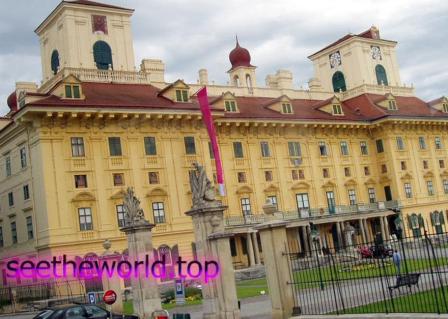
The main attraction of Eisenstadt and the landmark of Burgenland is Schloss Esterházy (Esterházy Castle). Esterhazy is a very famous aristocratic family, tracing its origins back to medieval times. Since the seventeenth century, the largest landowners in the Hungarian Kingdom. Ruled Eisenstadt and the surrounding areas under the Habsburgs.
The castle, built around the courtyard, was designed by the Italian architect Carlo Antonio Carlone, who began work in 1663. Subsequently, many architects reconstructed the palace-castle, leading to major changes in its appearance. In the 17th and early 18th centuries, the castle acquired a pastel-colored baroque facade. The historic Parade Hall is known as the Haydn Hall and is often used as a concert hall. Joseph Haydn was in the service of the princes of Esterhazi as a bandmaster for more than forty years. During this time, the great Haydn wrote more than a hundred pieces of music to perform in front of his patron. The walls and ceilings of the concert hall are thoughtfully decorated, the floor is simply wooden, but this contributes to the acoustic perfection of the space.
Haydn Church
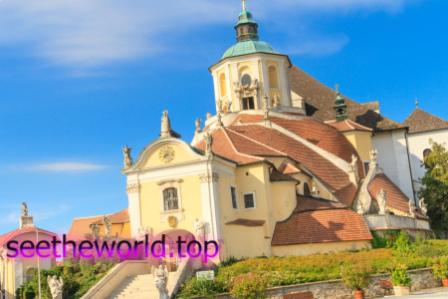
Haydn’s Church is also called the Church of Golgotha Mountain, next to the Calvary (Golgotha) complex. Until 1954, only the body of the composer was in the crypt of the church, the head was wrong. The real head was stolen very soon after Haydn’s death in 1809 and was not reunited with the body for 145 years. Followers of the so-called “Ghal phrenology” tried to confirm their theories about genius. In 1895 the skull was owned by the Society of Friends of Music in Vienna, then it ended up in the Collection of Ancient Musical Instruments in Vienna in the Hofburg Museums, where curious visitors were actually allowed to touch it.
After a long and difficult journey, passing from one owner to another, the maestro’s head was finally reunited with the remains in 1954. Nowadays, many tourists and fans of Haydn’s music visit Haydn’s church and mausoleum, located under the north tower, to pay their respects to the composer. The composer’s ashes rest in a beautiful white marble sarcophagus decorated with allegorical images. When the composer’s skull returned to its skeleton, the false skull was not removed and thus there are two skulls in Haydn’s grave.
Jewish Museum
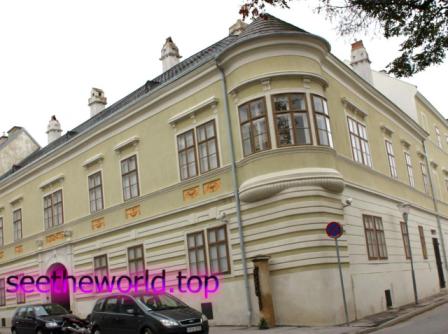
The Jewish Museum, founded in 1972, is the first such museum in Austria, whose exhibitions analyze Jewish life in detail. Jews settled in Burgenland from the 13th century. Established in a historic building in the former Jewish quarter of Eisenstadt, built by Samson Wertheimer in 1719, who was the chief rabbi of Hungary and Moravia and the rabbi of Eisenstadt. During a tour of the museum, you can see not only the wonderful museum collections, but also visit the former private synagogue, opened in 1979, and two old Jewish cemeteries.
Resorts of Burgenland. Bad Tatzmannsdorf
If you want to relax your mind and body from the daily bustle and problems, Austria is the country that will be able to give you everything you need for this. Here you will find unique landscapes of alpine mountains and meadows, among which lakes and forests are located. And you will also feel the tranquility of cities that have preserved the ancient way of life. But along with them, the country has many resorts that welcome countless tourists who come here year after year.
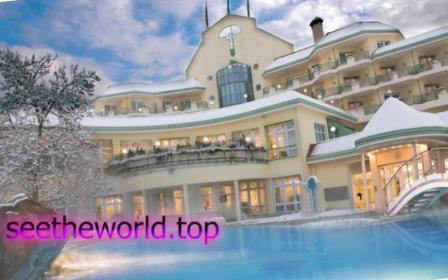
One of the popular thermal resorts is Bad Tatzmannsdorf (Bad Tatzmannsdorf), which enjoys special attention of tourists. It lies in the south of Burgenland and is only 116 km from Vienna. The capital of Burgenland , Eisenstadt, together with Esterhazy Castle, are known far beyond the borders of Austria. The natural features of the resort are the beautiful appearance of forests enveloping the mountains and quiet valleys. This leads to opportunities to engage in various sports and medical procedures here. As you can see, this is exactly the place where you can improve your mental and physical health.
Bad Tatzmannsdorf offers treatment based on traditions that have passed through the centuries. And it is based on 3 components: peat bogs with healing properties, mineral drinking water and hot water springs. Since ancient times, peat bogs have been used to treat women’s diseases, and now they are offered to patients with rheumatism and problems with the musculoskeletal system.
There are 4 sources of mineral waters of different types: calcium-hydrocarbonate with a temperature of 16 ° C – ” Franzkwelle “; calcium-hydrocarbonate ” Thermal “, where the temperature is 24 ° C; calcium-sodium-hydrocarbonate carbon dioxide ” Marinkwelle ” (13.2 ° С) and ” Vetchkwelle “.
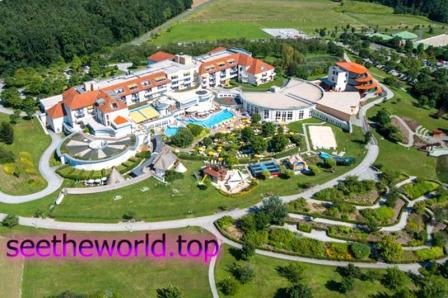
In the middle of the balneological resort, on one-tenth of a hectare, there is a thermal complex, where you can find swimming pools and pools with warm water (34-36 ° C), in addition, gymnastics classes are held here.
Many diseases can be treated here: those related to reproductive disorders, respiratory and urinary systems, gout, anemia, post-traumatic complications, burns, exhaustion, impaired wound healing, and even rehabilitation of cancer patients.
The resort offers such treatment procedures as: inhalations, spinal extractions in thermal waters, dry carbon dioxide baths and simple carbon dioxide baths, underwater massage, wraps and peat baths, mineral water drinking courses, and others.
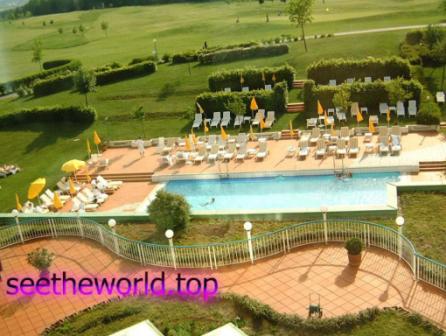
Bad Tatzmannsdorf provides an opportunity for everyone to enjoy rest and wellness procedures, both for whole families and for those who like to visit resorts alone or with friends. In this complex of thermal waters, there are entire massage banquettes, separate areas for relaxation and even equipment for underwater massage. Various wellness programs have been developed for guests, which allow you to relieve stress, restore the spine, and promote weight loss. It is possible to receive an individual program of treatment procedures from a specialist. A well-thought-out area for children’s games, which allows parents to relax while their children are busy playing.
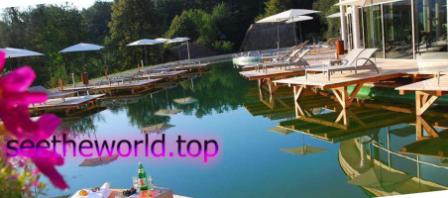
Bathing is offered to the youngest, it is useful even for 3-month-old babies. Strollers are allowed here and there are equipped tables for changing and feeding babies. Two water slides accept older children. The program for mothers ” Ladies Fit – for ladies only ” is in effect.
Next to this there are large slides for the whole family, towers from which you can jump into the water and a large light music salon, as well as a fitness center, jacuzzi, Finnish sauna, biosauna, aroma sauna and herbal sauna. And, of course, there is a restaurant, cafe, bar and parking. So all family members will find something to do here.
To the great pleasure of vacationers, you can learn to play golf and tennis here. Since the tennis academies named after Nick Bolltieri and golf named after David Ledbett are located here, which have indoor and outdoor courts. There are also places to play squash and badminton. You can go horseback riding or cycling, go fishing.
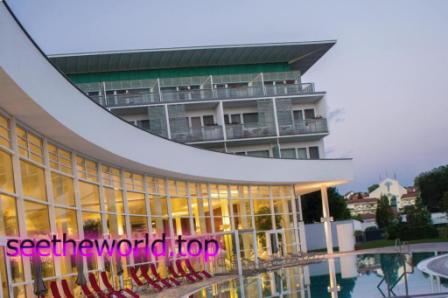
Thermen & Vital hotel 4 * has been operating on the territory of the balneological resort for 8 years . It is a separate complex spread over 2 thousand square meters. m and has its own medical and water procedures. It offers its guests saunas, steam baths, jacuzzis, swimming pools and SPA.
And for treatment there are: mud baths, physiotherapy and kinesiotherapy, inhalations, laconium, wraps made of oils and herbs, diets, water with healing properties, SPA procedures and various massages.
Rest at the thermal resort – hotel St. Martins Therme & Lodge 4 *, Burgenland
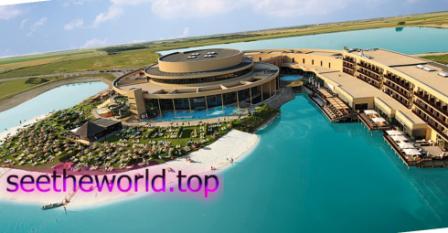
This exclusive 4-star resort is a “guest house surrounded by unspoiled nature”. Located on the edge of a national park, the hotel offers its guests new perspectives: it is a place to discover unity with nature. A place for connoisseurs and researchers. Say goodbye to daily routine work and immerse yourself in the world of relaxation: the world of thermal springs.
This resort is located in one of the protected corners of Austria, next to the Neusidlersee-Seewinkel National Park, where a new thermal complex and an unusual hotel – the first hotel-lodge St.Martins Therme & Lodge in Austria – opened.
The unique nature around Lake Neusiedler and Austria’s first National Park have always attracted many visitors from all over Europe. With the opening of St. Martins Spa & Lodge this UNESCO World Heritage region has now also become an exclusive spa resort away from the hustle and bustle. V amed – a leading international company in the field of health care – has created a whole complex for recovery, restoration of energy and good health, just 60 minutes away by car from Vienna, Bratislava and Gyor. So now Seewinkel is also a place for rest at any time of the year.
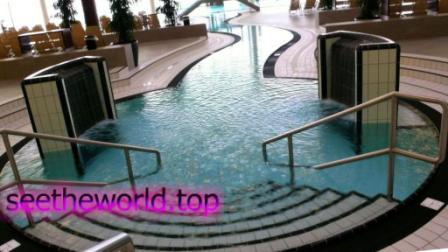
The thermal baths and the hotel connected to them by a passage are located on the eastern shore of Lake Neusiedler , on the border with Hungary, next to a small lake. The nearest settlement is Frauenkirche . The road from Vienna will take 1 hour, from the Vienna airport – 45 minutes.
Thermal waters were discovered here recently. Hydrocarbonate-sodium water (mineral content 1.2 mg / l) comes from a depth of 860 m, its temperature is about 43 ° C (thermal spring ” Seewinkel Thermal 1 “). Thanks to the mineral components, the water has a beneficial effect on the skin and joints.
St. Martins Therme. The thermal complex includes: open and closed pools with thermal water (35 ° C) and various devices for underwater massage, a recreation area, a beach on the lake, a complex of saunas (5 different types of saunas and steam rooms), open and closed pools with ordinary water , jacuzzi, contrasting showers, lounge with a fireplace, restaurant with a terrace overlooking the lake, bar, shop. The thermal complex has a separate area for children with special pools with thermal and plain water, a pool for the little ones, and water slides.
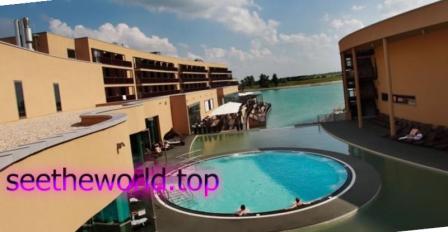
Hotel St. Martins Spa & Lodge is located right on the big lake and offers its guests unique exciting excursions and bird watching in the natural complex of Seewinkel. In the place where the foothills of the Alps converge with the Pannonian plain, a special nature protection zone was created, covering the steppe and reed thickets, oak groves, landscapes and forests. 320 recorded species of birds, water buffalo, endangered wild horses and much more await visitors on foot, horseback, bicycle or canoe.
The concept of the hotel provides rest in “union” with nature: the three-story, multi-level building of the hotel is inscribed in the landscape, the equipment of the rooms will include excursions to the national park, observation of animals and birds.
In the lobby and on the lakeside terraces on weekends, guests can warm up by the fire and enjoy local dishes and a selection of 60 local wines served in the Gourmet Restaurant and Winebar – always according to the season. Guests are provided with a peaceful and relaxing vacation in the spa and fitness center.
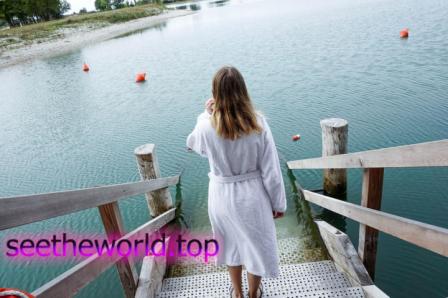
In the summer, they can have an outdoor massage, relax in a hammock, go to the hotel’s own beach, admire the lake from the wooden terrace, as well as from the “Nature Observatory” on the top floor of the hotel. Together with the Barbor cosmetic brand, the St. Martins Spa & Lodge offers beauty treatments and care using regional elements such as salt, grapes, yeast, champagne and special teas.
A world of health treatments and thermal waters, as well as five saunas and steam baths, awaits guests on excursions, adventure seekers, nature lovers and bird watchers in the classic spa. And here the surrounding world determines the choice: a steam bath using salt water and steppe herbs, a reed sauna, a stone sauna and an exclusive Pannonian sauna. In the pools, separate small sections provide guests with complete relaxation, while opening a beautiful view of the hills of the Pannonian plains.

In addition, there is a private beach on the lake and an elegant beach bar. Seewinkel is considered one of the warmest regions in Austria. From the terrace on the 2nd floor, guests can admire the colorful sunsets over Lake Neusiedler.